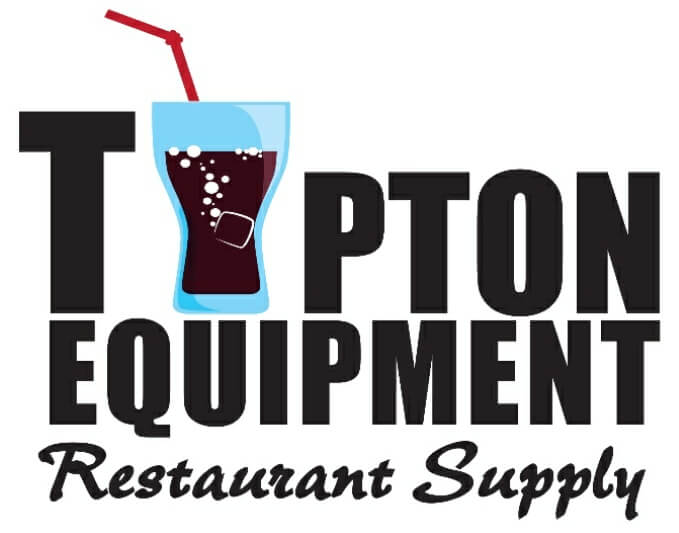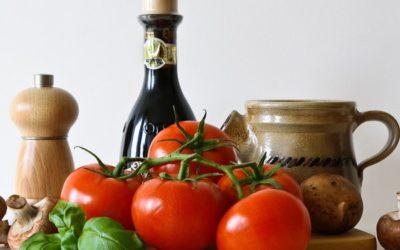What’s in a Cooking Pot? How to Choose the Right One
March 19, 2018As a restaurant owner, your cooking needs might vary.
Did you know that a good quality pot can greatly improve your cooking experience, while also improving the quality of your cooking? This cooking equipment is a very important one that cannot be done away with despite all of the advancements in technology.
Rather than purchasing many different sizes, shapes and kinds of this cooking equipment, a few carefully selected pieces might be all you need. Consider a few important tips to keep in mind when shopping for a quality pot.
Size
Size is a very important factor when selecting any cooking equipment. It is thus important that you are decided on size before you begin shopping. Keep in mind that pots vary wildly in size, generally ranging from 6 to 20 quarts for residential usage. However, as a restaurant owner serving a large customer base you might seek a bigger version of this cooking equipment, and you’d be sure to find those above 20 quarts if needed. But pots 12 quarts and above should do. Note that as a pot gets larger it is also likely to get heavier – depending on the pot material.
Materials
As with every cooking equipment, the materials from which pots are made play a huge role in their ease of use and specific functional applications. Consider a few:
Stainless steel: Smooth, shiny surface metal for easy visibility. It is a poor heat conductor, but it also is entirely nonreactive to any food type and very durable. It is also a very versatile cooking equipment for many food types.
Aluminum: They heat faster than stainless steel, and are usually very lightweight, but they also require more care and are more difficult to clean and maintain due to their ability to interact with foods that are acidic, alkaline, and sulfurous.
Copper: A great heat conductor, copper heats quickly and is warm on the eye. It is also highly reactive with food – interacting poorly with acidic and alkaline foods, but will last you if the pots are lined and you polish it often enough.
Non-stick Coating: High resistance to heat and abrasion, and useful for solid foods with high sticking possibility.
Cast iron: Heats up slowly but retains heat for long. It needs regular drying and oiling to keep it safe but that can be solved by purchasing one with enamel coating.
Shape
This cooking equipment comes in a variety of shapes. While they are conventionally tall and narrow, pots particularly designed for cooking soups are usually short and wide to allow for easy stirring. Wide pots, though, do not evenly spread heat around due to their large bases, while narrow pots are usually more consistent with their heat spread due to their narrow base.
Handles and Lids
As a restaurant owner, you would probably be needing this cooking equipment to not only serve you well on the stove but to also be heatproof for oven use. While you are likely to seek out handles that do not retain heat, such as plastic and wooden handles, these handles may have issues with heat. In this case, stainless steel handles are best for you. Properly welded handles might also serve you longer than riveted ones.
Construction
Pots with thick and heavy bases transfer heat at a much slower rate than thinner pots. These kind of pots are great for long, slow cooking. When this kitchen equipment has a thick base, it prevents ingredients from sticking to the bottom of pots. Pots with composite builds – whether these are all-clad composite pots or base insert composite pots – are also better at transferring heat evenly through a pot.
Choosing the right cooking equipment for you can feel overwhelming at times. But it shouldn’t be. Consider the types of food you’ll be cooking and the pots that will best satisfy these needs, also consider your budget (this cooking equipment can get really expensive when it becomes more specialized and advanced) when selecting the right one for you.
5 Keys to Creating the Perfect Restaurant Seating Areas
Restaurants are about so much more than just food. From the setting and layout of your restaurant to your choice of colors, it takes a lot more than an appealing menu to keep diners coming back for more. When setting up your restaurant, booths and chairs are important...
Food-Cutting Secrets to Beautiful Dishes
In the restaurant industry, presentation is often said to be just as important as the food itself. Using the right knowledge, skills and restaurant supplies, you can incorporate creativity into your presentation, making guests feel that they are getting something...
Restaurant Prep Tool Selection Simplified
What’s a restaurant kitchen without high-quality prep tools that can withstand the pressure of frequent use? Whether you already have a restaurant you’re running, or you’re just planning to launch one, one vital factor that could make or mar your business is how you...
Beer Chilling Systems: Which Type Is Right for My Restaurant?
A refrigeration unit is integral to the functioning of any restaurant. Beers are best served cold - there’s no questioning that! But which beer chilling system is the best? From reach-in coolers to glycol chillers, a beer chilling system is an important piece of...
How to Identify the Best Food Processor for Your Needs
Highly versatile and extremely efficient, food processors are designed to take away the hard work from repetitive kitchen activities. This type of cooking equipment can quickly become an invaluable tool in your kitchen. From chopping, to shredding, grinding, mincing,...
5 Essential Buying Tips for Your Next Food Prep Work Table
The right foodservice equipment is pivotal to the efficiency of your kitchen. One of the most important types of foodservice equipment for any kitchen is the work table. With limited room on countertops available for your food prep needs, the cooking process can drag...
Top Space-Saving Tips for Commercial Kitchens
Top Space-Saving Tips for Commercial Kitchens Space is always an important consideration when setting up a kitchen, and this is even truer for commercial kitchens. With a strong focus on functionality and the kitchen supplies that meet the needs of your commercial...
Beginner’s Guide to Choosing a Commercial Ice Cream Freezer
Ice cream is a delicious and appealing desert treat for everyone, young or old. Having made the decision to sell ice cream to your customers, whether you have a restaurant, convenience store, or specialty ice cream parlor, it is time to begin stocking up on the right...
What Equipment Will I Need to run a Food Truck?
There’s a lot of planning that goes into starting your own food truck business. Before you hit the road with your delicious food offerings, you’ll need to fill up your truck with all the right foodservice equipment. Considering the lengthy list of possible items to be...
6 Keys to Choosing the Best Chafing Dishes for Your Restaurant
The chafing dish, also known as the chafer, is an essential piece of restaurant equipment for any establishment that wants to keep food hot. This type of restaurant equipment gets its name from the French word, chauffer, which means to heat, and it’s easy to see why....
Tips for Keeping Your Commercial Sink Sparkling Clean
Your commercial kitchen, just like your personal kitchen, must be kept clean at all times. With all of the cooking and food processing you do, it is inevitable that your sink gets messy. Cleaning up your commercial kitchen is incomplete without proper cleaning of your...
5 Ways to Get the Most Out of Your Mixer
No one wants to eat off of dirty or tarnished silverware. A stand mixer is a highly useful piece of kitchen equipment to invest in. Although this type of kitchen equipment does not usually come cheap, it can last a lifetime when properly cared for. Despite all your...
How to Choose the Right Kitchen Scales for Your Restaurant
A food scale is an essential item in every restaurant’s store of kitchen supplies. Designed to take the guesswork out of food measurement and maintain consistent food serving sizes, food scales are indispensable kitchen supplies in the commercial kitchen. With such a...
8 Types of Food Thermometers: What You Need To Know
Food thermometers are essential restaurant supplies for your commercial kitchen. They ensure that foods prepared in your commercial kitchen are cooked to the right temperature and held at that temperature for as long as necessary to kill any harmful bacteria. This...
Turning up the Dial on Commercial Fryers: How to Choose One for Your Restaurant
Fried food is a well-loved favorite. This is a fact. It also makes a fryer an important piece of equipment to have in your commercial kitchen. Just consider how many appetizers and sides require frying: onion rings, French fries, and fried green tomatoes are just a...















